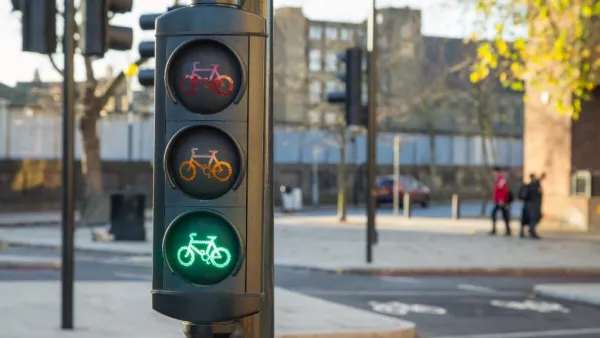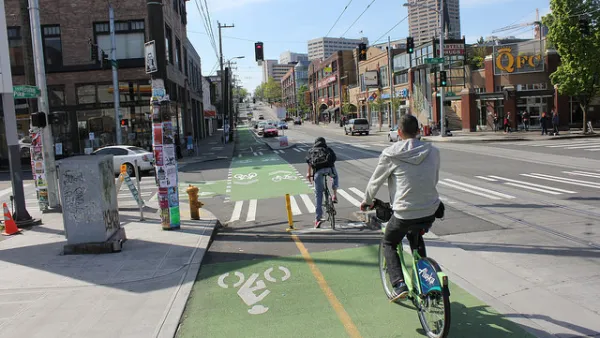Downtown Seattle is doing something right to get drivers out of cars: a recent survey reveals that fewer and fewer commuters are driving alone, and the fastest growing modes for commuters are of the non-motorized variety.
"Commute Seattle released new survey data,with the help of EMC Research [pdf], that shows a growing percentage of Downtown commuters rely on modes other than single occupancy vehicles (SOVs). In fact, 60% of commuters don’t drive at all, instead opting for transit, walking, or cycling," reports Owen Pickford.
"The mode split by type has changed significantly since the last survey, which was completed in 2012. Nearly 4% fewer people drove alone compared to that survey and it seems likely that Seattle will reach its goal of 30% or less by 2016."
There are drivers who probably wonder how those numbers can be true, but the city's increasing population means that the same number of drivers are on the road, even if they make up less of the overall mode share.
Yonah Freemark took to Twitter to note that the shift in mode share followed years of investment in Seattle's transit system. Writing for Streetsblog USA, Angie Schmitt notes that the data are "a testament to how quickly travel behavior can change..."
FULL STORY: Commute Seattle Study Shows Only 31% of Downtown Commuters Drive Alone

National Parks Layoffs Will Cause Communities to Lose Billions
Thousands of essential park workers were laid off this week, just before the busy spring break season.

Retro-silient?: America’s First “Eco-burb,” The Woodlands Turns 50
A master-planned community north of Houston offers lessons on green infrastructure and resilient design, but falls short of its founder’s lofty affordability and walkability goals.

Delivering for America Plan Will Downgrade Mail Service in at Least 49.5 Percent of Zip Codes
Republican and Democrat lawmakers criticize the plan for its disproportionate negative impact on rural communities.

Test News Post 1
This is a summary

Test News Headline 46
Test for the image on the front page.

Balancing Bombs and Butterflies: How the National Guard Protects a Rare Species
The National Guard at Fort Indiantown Gap uses GIS technology and land management strategies to balance military training with conservation efforts, ensuring the survival of the rare eastern regal fritillary butterfly.
Urban Design for Planners 1: Software Tools
This six-course series explores essential urban design concepts using open source software and equips planners with the tools they need to participate fully in the urban design process.
Planning for Universal Design
Learn the tools for implementing Universal Design in planning regulations.
EMC Planning Group, Inc.
Planetizen
Planetizen
Mpact (formerly Rail~Volution)
Great Falls Development Authority, Inc.
HUDs Office of Policy Development and Research
NYU Wagner Graduate School of Public Service




























